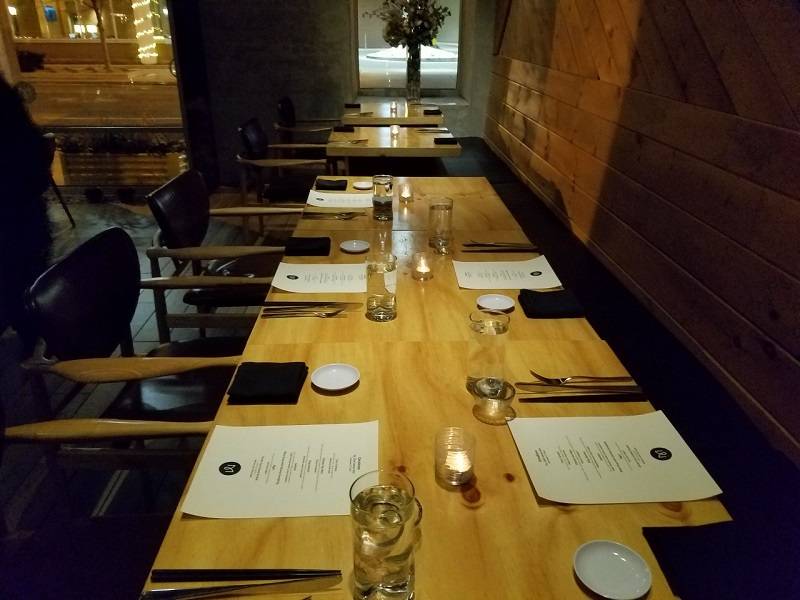Does “omakase” mean anything to you? Japanese for “I’ll leave it up to you,” an Omakase is a rare experience. Choosing a variety of fresh, high quality ingredients, a chef creates a truly unique experience for their guests. Last Wednesday, December 5th, Miga’s Sushi Chef James Kim crafted a wondrous seven-course meal for us to enjoy. What follows is my experience on that wintery December night.
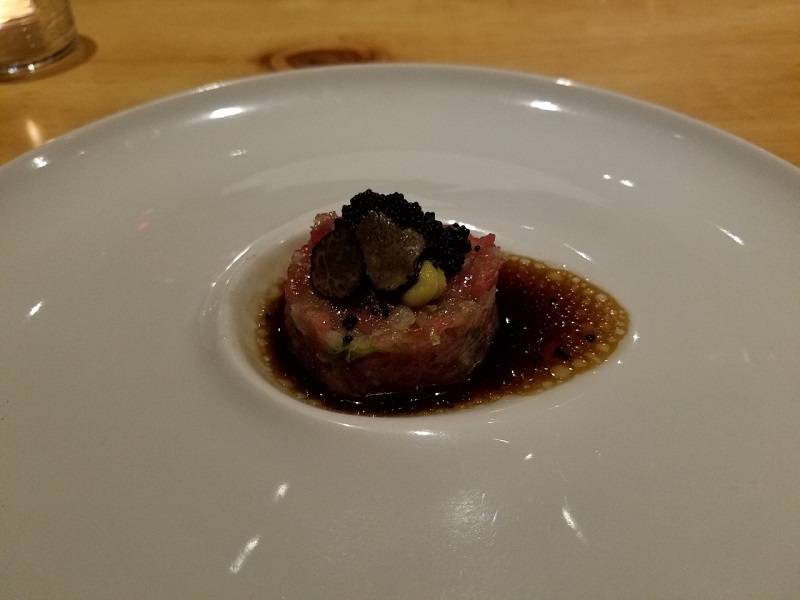
Our first course toro tartare, fatty tuna with a dash of black truffle, a sprinkle of salty caviar and soaked in a wasabi mustard sauce. Served on an oversized plate, the toro tartare was more substantial than it first appeared. Deliciously soft, my first bite was delightfully rich and carried just a hint of heat from the mustard sauce. Making sure to get some caviar with each bite, I had enough salt to compliment the fatty tuna. Before I knew it, the last bite of toro tartare was gone. Washing down the flavor with the refreshing Hakutsuru draft sake provided, I patiently awaited my next dish while still thinking about that delicious mustard sauce I now wanted with every meal from now on.
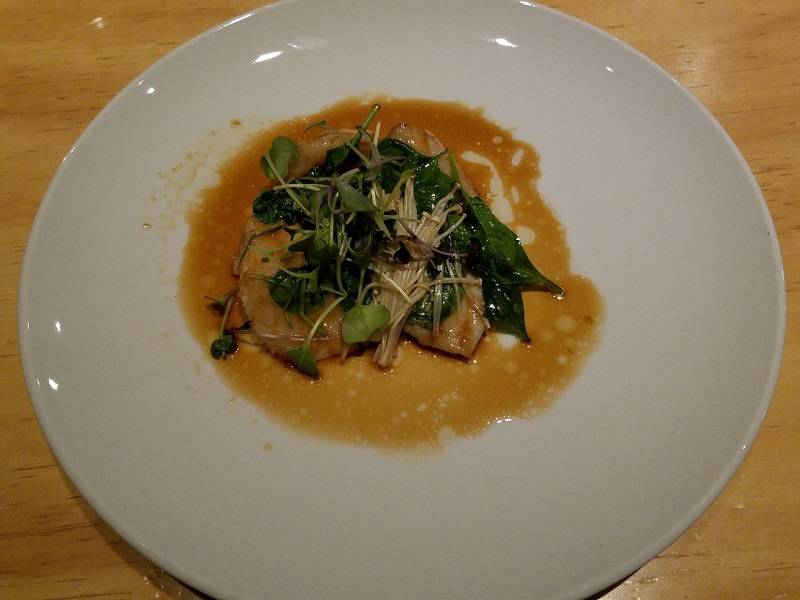
Carried out on a similarly large platter but taking up much more of it was Chilean sea bass, our second course of the evening. Smelling of freshly seared fish and warm vegetables, I was ready to dig in as soon as my food reached me. Since it was soaked in a salty, savory olive oil, the sea bass nearly fell apart between my chopsticks as I ate it. I could hardly believe the second course would so quickly top the first, but the Chilean sea bass did so. Made heartier with the addition of the enoki mushrooms and spinach, my ravenous hunger at the start of the meal was now sated. As usual, we also enjoyed a sake paring with the bass, although this sake was a bit stronger than the first.

To counter the savory sea bass, our third course was king salmon and avocado wrapped in mango on a thin layer of cucumber. As if that wasn’t enough, this course also came with a sauce, this time a dashi konbu vinegar with more than a bit of punch. With each bite of the king salmon rolls, I grew increasingly refreshed and relaxed. The mango was sweet, the salmon tender, the avocado creamy and the vinegar helped blend it all together. Surprisingly, I encountered a peppery aftertaste from some, but not all the bites I took. After some investigating, I learned the kaiware sprouts were the source of that interesting flavor. Going along with the lighter dish, we sampled a sake advertised to us as “fresh and light,” which was certainly true.
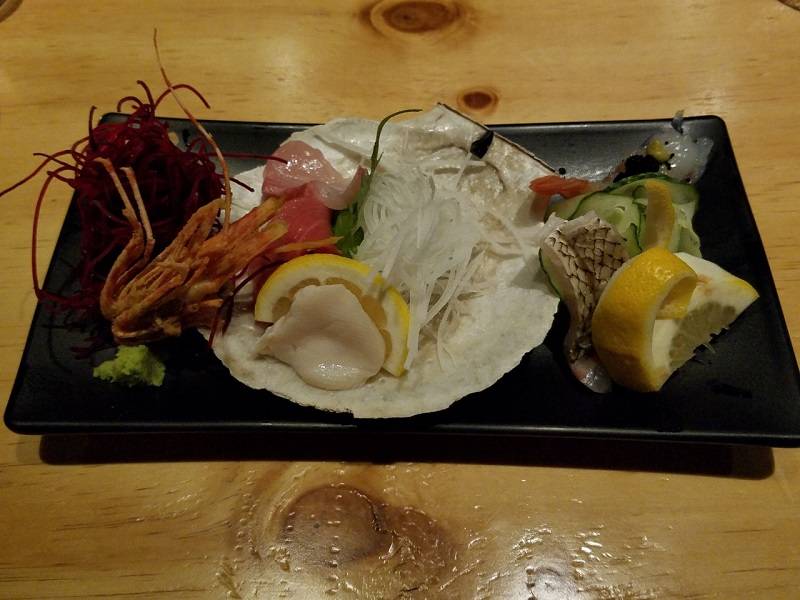
With a palate cleansed and ready for food with more subtle flavors, our sashimi arrived. Composed of otoro (fatty tuna), sweet shrimp, scallop, sea bream, amberjack, and a whole fried shrimp resting amongst lemon slices and vegetables, course four was a lot to take in. Wanting to try something a bit different, I crunched my way through the shrimp and was surprised by how easily it crumbled to pieces in my mouth. With the last fried piece of shrimp gone, I moved onto the rest of the dish. Of note was the sweet shrimp and fatty tuna, both of which tasted wonderful in combination with the richer than usual soy sauce provided to us by Miga. Oh, and did I mention the wasabi on our plates was fresh? No horseradish substitute for this Omakase experience.
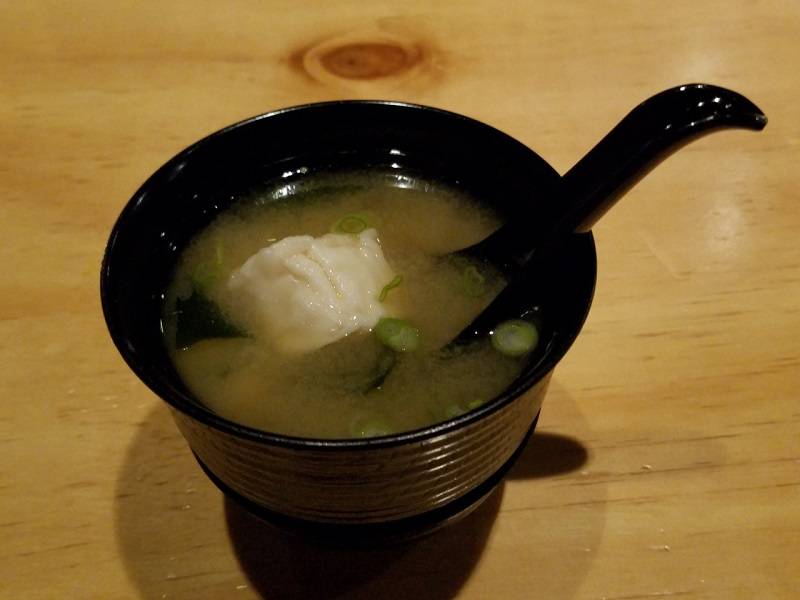
Stuffed full of fresh seafood, and even more sake, we took a break from heavy foods with a simple bowl of miso soup containing a single shrimp dumpling for our fifth course. More than a bit salty, miso soup is one of the few soups I enjoy, as it has a savory aftertaste and is rather light, as well. Quickly scooping up the bits of tofu and the lone shrimp dumpling, I settled back into my seat content, although Chef Kim wasn’t finished with us yet. After priming us with a citrus sake, the sixth course of nigiri arrived. As opposed to the earlier sashimi, our nigiri rested on small mounds of rice. Each variety of fish was artfully arranged and was fresh. Dipping the tender fish into the remnants of my wasabi-infused soy sauce, I made certain to savor every moment of this course, as I knew the Omakase was nearing its end.
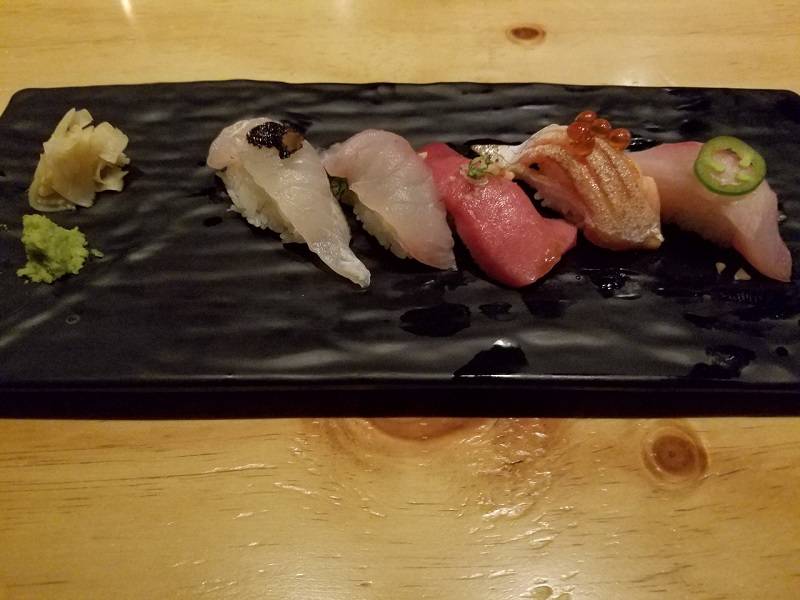
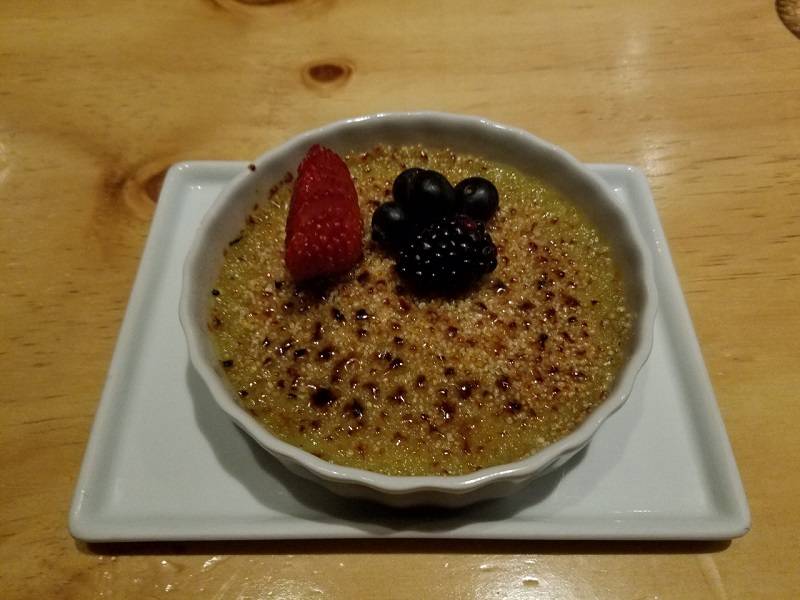
Wrapping up the evening, course seven arrived in the form of green tea crème brûlée. Crafted with matcha powder mixed into the creamy base, this dessert proved less sweet than other crème brûlée I’ve eaten. I appreciated that aspect, as the earthy taste of matcha mixed well with the muted sweetness of the cream. Bursts of sweetness were delivered to us by the topping of fruit and crunchy sugar granules sprinkled on top of the dessert. Topping off an already exceptional evening, we sipped Himizen ume plum sake, a sweet sake with a delicate plum aftertaste. Certainly a memorable sake for an evening none of us would soon forget.

With the taste of macha lingering in my mouth, I reflected on the Omakase. I enjoyed all the courses immensely, with the Chilean sea bass not only my standout favorite, but my sister’s (who joined me at dinner) as well. Any course with a sauce was memorable to me, as Chef Kim has a talent for sauces with complex and delicious aftertastes. With all this in mind, please do not let the opportunity to attend an Omakase pass you by. While we all live busy lives, each event is special and will never be experienced the same way twice. Keep an ear to the ground for the next Omakase dinner at Miga.
Miga
301 N Neil St Suite #104
Champaign
M-Th 5 to 9 p.m.
F + Sa 5 to 10 p.m.
Photos by Matthew Macomber








